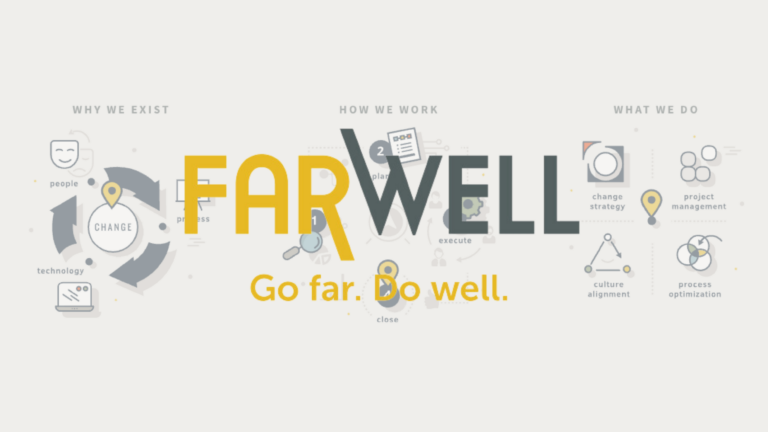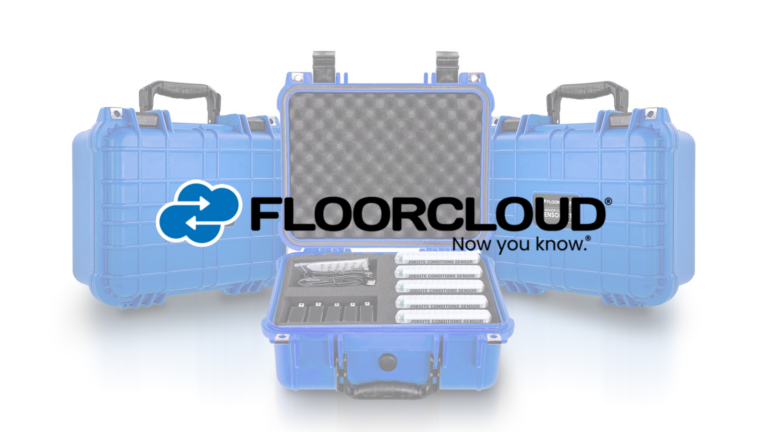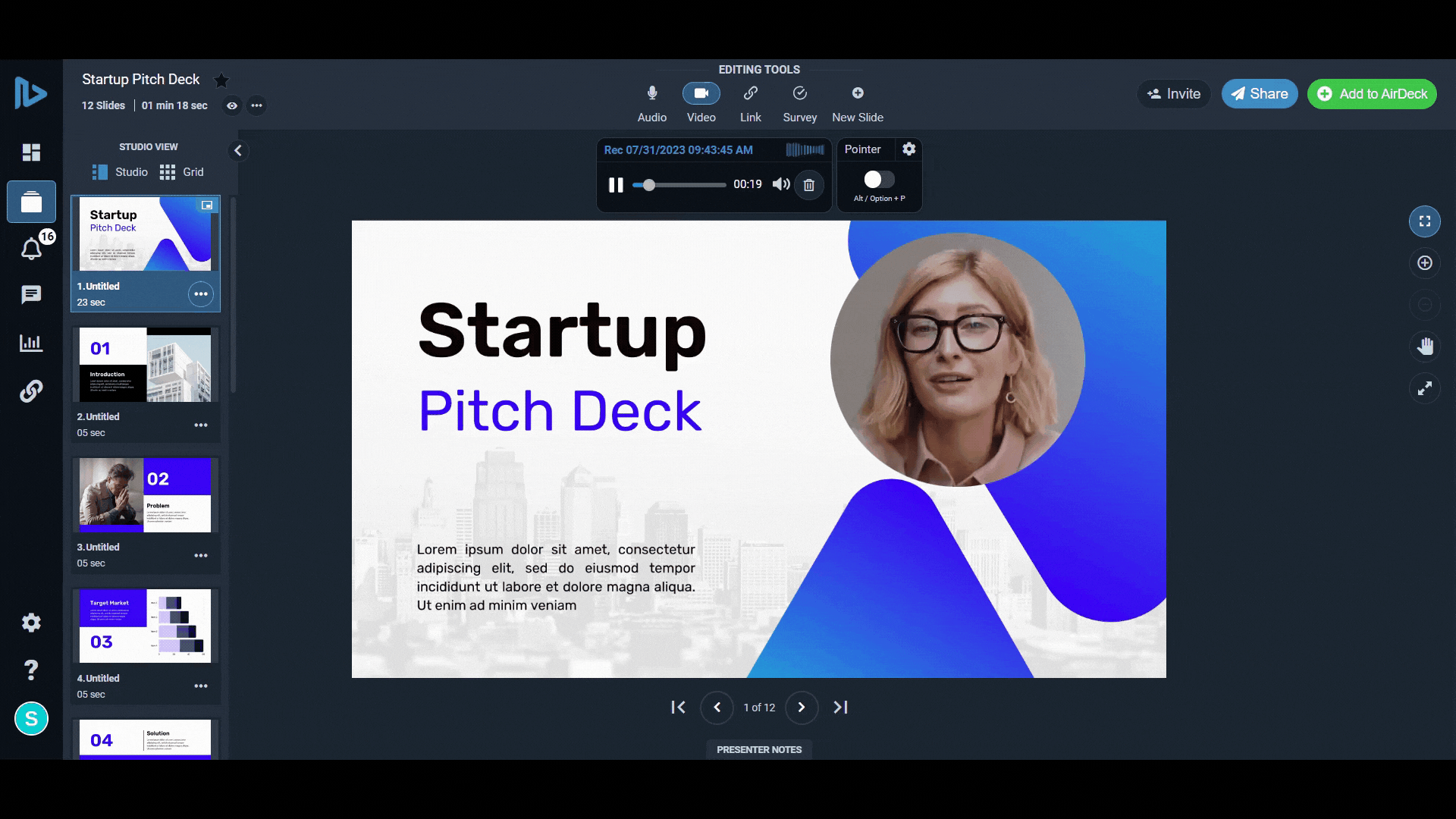Have you heard the news? On average, employers only review resumes for about six to seven seconds, says Indeed.
But don’t get too discouraged just yet! While it can seem like a Herculean task to get recruiters and hiring managers to pay any attention to your resume, this just means one thing: You need to figure out how to get creative.
AirDeck can help you do it. Here are five steps to create the perfect resume with AirDeck:
Step 1: Rethink Step 1
Before you open that Word Doc or Google Doc and get to work typing out your list of work experiences, pause for a second.
What’s another way you can make your resume stand out? AirDeck supports more than 210 different file formats, which means you don’t have to go basic when creating the bones of your resume.
For example, you can make your resume presentation-ready by formatting it in a slide deck, building different slides to show off your work history, education, volunteer work, and any other relevant activities. Or maybe design is your thing. Take to a graphic design tool like Canva to create the frame for your resume; save as a PDF: and then upload to AirDeck to get creative.
There is no one-size-fits-all format for the perfect resume. Rather, the perfect resume for you is one that best represents you, best shows off your skills, and—most importantly—best helps you stand out from the crowd.
The first step in creating the perfect resume is breaking with convention and rethinking what you know about job hunting.
Step 2: Add Your Voice
So you’ve done it. You’ve organized your work history in Google Slides. Or you’ve detailed your educational background in Canva and saved it as a PDF. And you’ve uploaded it into AirDeck.
What’s next?
Adding you.
AirDeck is a document narration platform that lets you easily add audio and video narrations to practically any document—in this case, your resume. By adding your voice, you turn your basic document into a bespoke presentation not just about your work history but all about you and what value you can bring to your dream company.
It’s simple. Use the built-in laser pointer, hit record, and start walking prospective employers through your resume. This lets you dive deeper into the details, explain that gap in your work history, and make sure nothing is left up to interpretation.
Using AirDeck to add audio narration to your resume speaks volumes (literally) by empowering you to offer so much more than just a few plain bullets.
Step 3: Enrich with Video
The perfect resume will not only carefully detail your professional skills, work history, and education, but it will also show who you are as a person.
In fact, CareerBuilder reports that soft skills are just as important as hard skills to 61% of employers. What are soft skills? Things like communication, leadership, and teamwork, which can be pretty hard to show on a standard resume.
Adding video to your resume with AirDeck, on the other hand, is a great way to flex your communication muscles.
By layering your resume with video content, you can create an instant personal connection with recruiters and hiring managers. And adding this kind of personal touch can go a long way in helping you snag the interview.
Don’t worry if you’re a little camera shy. Even just creating a short video introduction and/or conclusion is enough to get your face in front of prospective employers and help make a lasting impression.
Step 4: Include Your Portfolio
Today, building the perfect resume is about more than just a simple one-pager—you also need to create a portfolio.
Did you know that 85% of recruiters believe candidates exaggerate skills on their resumes? It’s one of the all-too-scary but all-too-true statistics about resumes that you don’t want to hear. But including a portfolio along with your resume can help prove that you’re telling the honest-to-goodness truth.
A portfolio is a collection of some of your best samples of work. This might be an article you wrote, a report you created, or even a clip of a speech you gave. They help demonstrate to prospective employers that you’ve got the goods—and have the proof to back it up.
Instead of sending a separate resume and a portfolio, AirDeck makes it easy to do it all in one. Because AirDeck supports more than 210 file formats, you can simply upload samples of your work and showcase them right alongside your resume, complete with audio narrations to explain your work where you want.
Step 5: Know When to Follow Up
Don’t get ahead of yourself—the perfect resume isn’t complete when you hit SEND. You still have to follow up.
Best practices suggest sending a follow-up email about one to two weeks after sending your resume. But creating the perfect resume isn’t about following the same best practices that everyone else is.
AirDeck helps you unlock the inside perspective to know exactly when to follow up on your resume.
It starts with sharing your resume. Once you create your resume in AirDeck, you can share it with prospective employers via a custom, secure link.
This link is what has the goods.
With AirDeck’s powerful tracking and data analytics capabilities, you can track exactly when hiring managers click on your link to look at your resume. You can also see how many times they look at it, who they share it to, and which parts of your resume they viewed the most.
Together, all of this data helps you know exactly when to send that follow up email (and having that extra insight certainly won’t hurt when it comes interview time, either!).
Figuring out how to build the perfect resume can seem like a daunting task—but you don’t have to go it alone.
With AirDeck, you’ve got the tools, the support, and the superior insight to help create and send the perfect resume for your dream job.













